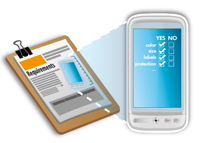 As I wrote in What are Laboratory Certifications Worth in China?, it is important to verify the test reports or conformity certificates.
As I wrote in What are Laboratory Certifications Worth in China?, it is important to verify the test reports or conformity certificates.
I would guess that between 10% and 30% of the certificates given by Chinese suppliers to their customers are fake. Why is that?
- On the supplier’s side, things are simple. There is no liability if the product is dangerous, and there is virtually no punishment if a customer finds out that a document is fake. On the other hand, paying a laboratory costs money… For a result that is not guaranteed (who knows if the result will be passed?)
- On the buyer’s side, the situation is a little more blurry. Many small importers think that a certificate from a famous lab will spare them of any liability (wrong). And often they don’t even know what regulatory standards apply to their products.
Today I attended a seminar organized by ProductIP and I got a few useful tips for importers.
The certificate format
If a supplier sends you a certificate that is not a regular pdf file, it means they don’t have the original file. Be suspicious of documents in .JPG, .PNG, and .DOC formats, as well as scanned PDFs.
If they don’t have the original file, what does it mean? What company actually sent samples to the laboratory and got that report? Is it a legitimate document? Was it photoshopped?
The issuing laboratory
If you have never heard of the test laboratory that issued the report, what to do?
- Google their name, see if they are ISO 17025 certified, and see if their testing scope includes the product in question.
- You can also check whether they are one of the “notified bodies” (the most authorized labs in Europe) in the NADO database.
Was this certificate really issued by that lab?
Calling the testing lab is an option, but a faster solution is to check directly in their database. Here are a few examples:
- TUV Rheinland: http://www.certipedia.com/search/companies_with_certified_products
- SGS: http://www.sgs.com/en/Our-Company/Certified-Client-Directories/Overview.aspx
- Intertek: http://www.intertek.com/business-assurance/certificate-validation/
- VDE: http://www.vde.com/en/institute/onlineservice/vde-approved-products/pages/online-search.aspx
Maybe some readers have other questions related to testing reports/certificates?
—————
Update Feb. 2022: watch this video for advice: 10 tips to identify counterfeit certificates
—————
Quality Assurance Policy For Importers In China [Webinar]
What is the 80/20 rule when it comes to QC in China? The answer is building a strong quality assurance policy of your own.
In this webinar, we’re going to explore key challenges facing importers from China, and the elements that compose a really solid, effective quality assurance policy.
Improving your quality assurance will help avoid poor quality products from hurting your business. Hit the button below to register to watch the webinar!

